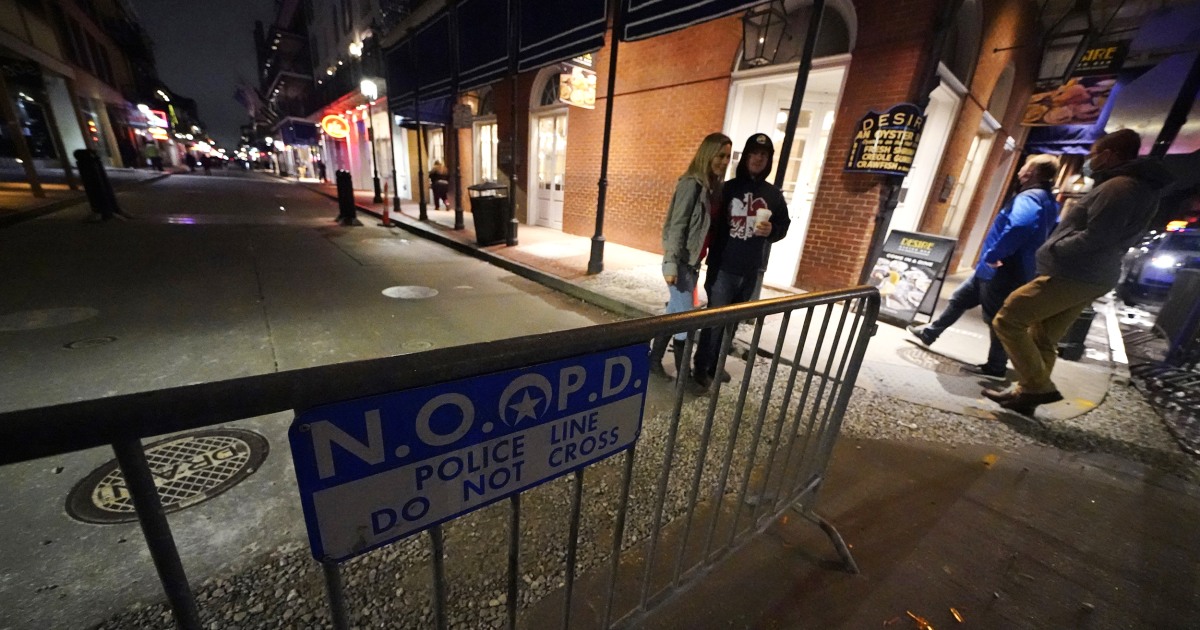Some New Orleans bars have replaced the festive Mardi Gras flags hanging from their businesses at this time of year with white flags.
Beaux Church, director of Café Lafitte in Exile, Good Friends Bar and Rawhide 2010, said the white flags indicate that companies have surrendered to repression across the city during New Orleans’ most famous celebration.
“We had already bought all of our food and drink supplies … and the rug was pulled under us at the last minute,” said Church. “All bar owners would be much better off at least two weeks in advance.”
Citing concerns about the coronavirus, Mayor LaToya Cantrell said on February 5 that all bars in the city would be closed for five days – from the Friday before Mardi Gras until Fat Tuesday itself, which falls on February 16. this year. The sale of alcoholic beverages is not permitted in the French Quarter, even at liquor stores, and take-out drinks are prohibited during the five days. Parades and large gatherings are already prohibited, and masks and social distance are necessary.
Authorities hope to avoid a repeat of Mardi Gras 2020, which attracted more than a million people to New Orleans to celebrate Carnival and, without knowing it, contributed to the outbreak and caused the city’s hospitals to reach their maximum capacity.
This means that the economy dependent on tourism in the city – formed by restaurants, bars, shops and hotels already hard hit by the pandemic – will have little to wait for this Carnival.
Cantrell said the restrictions were “necessary” and would prevent the deadly virus from spreading.
“This year, knowing what we know now, I am doing everything I can to keep our people safe and save lives,” she said. “I prefer to be accused of doing too much than doing too little.”
New Orleans is currently losing up to $ 130 million in visitor spending per week because of Covid-19, according to New Orleans & Company, which promotes tourism in the city.
“New Orleans has a reputation and a brand that far exceeds its actual size … and what we are seeing is the devastation of most of our economy,” said Stephen Perry, CEO and president of the agency.
Before the coronavirus crisis, tourism and hospitality were among the main industries in the city and the state. In 2019, Louisiana attracted nearly 53 million domestic visitors, who spent about $ 18 billion, according to a report by DK Shifflet, a consumer travel research company.
That same year, New Orleans received about 19 million tourists, who spent $ 10 billion.
Cantrell’s decision to expand restrictions during such a busy and profitable period followed large gatherings on Bourbon Street and elsewhere in the days leading up to the holiday weekend, which Cantrell called “unacceptable”.
Church said security measures are essential, but added that companies and employees depend on the festivities for an increase in sales in what has been a worrying time for many people in the city.
“We were bringing many of our employees on holiday in the hope of earning enough money to keep some of them for a while,” said Church. “We are a closed group and it is sad when you have to let so many people go.”
Like Church, business owners and operators in the city have struggled for nearly a year, facing reduced hours and varying regulations, which has led many to question whether their businesses can survive the pandemic. The latest restrictions are yet another blow to the tourism and hospitality industry struggling to survive.
Without the usual Mardi Gras festivities, many companies will miss a predicted increase in profits, said Markus Schuckert, professor and director of the University of New Orleans Hospitality Research Center.
Normally, during the Mardi Gras season, the hotel occupancy is at least 90%. However, the average occupancy in 2021 is about 20%, according to the Greater New Orleans Hotel & Lodging Association.
“Mardi Gras is a mega event made by residents for residents and tourists,” said Schuckert. “It involves the whole city and has a huge impact in terms of revenue, because you have a lot of people coming here to spend money”.
New Orleans city councilor Kristin Gisleson Palmer, whose zone includes the French Quarter, said her district is the biggest revenue driver in the city and the most affected area since the pandemic.
“It is very worrying … I am afraid that the neighborhood bars and restaurants will close, and I am hearing from the owners that every small portion of the income helps, and they were counting on [Mardi Gras]”Said Palmer.
Shelly Oechsner Waguespack, president of Pat O’Brien’s, a French neighborhood bar, said she was disappointed by the city’s latest crackdown and is struggling with the idea of closing in the middle of carnival.
Waguespack said the bar’s earnings fell 75 percent in 2020 compared to the previous year. In addition, she had to lay off about 170 employees and currently has only about 30 people working.
“It’s our weekend in New Orleans, and the fact that we can’t celebrate takes away a large part of our being,” said Waguespack. “People don’t realize it, but for us Mardi Gras is much more than accounts on the streets. It’s a whole culture.”


